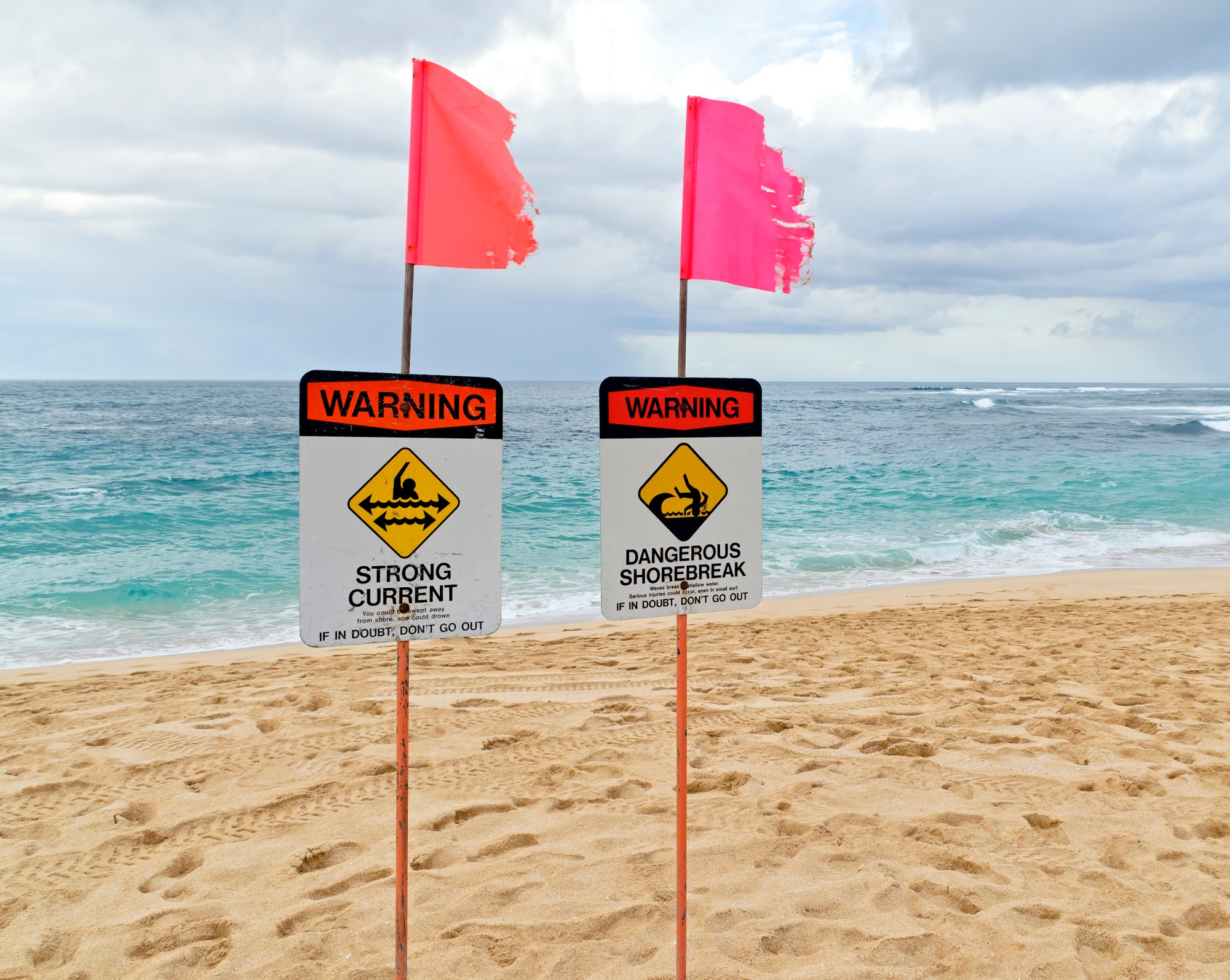Hawaii Beach Safety

Hawaii is known to have some of the most beautiful beaches in the world. There’s nothing more refreshing than jumping into the cool blue Hawaiian waters! Snorkeling, body boarding, surfing, cliff jumping and scuba diving are some of the popular activities that visitors are excited to experience. However, despite its beauty, Hawaiian waters can also be dangerous. From crashing shore break to rip tides and currents, there’s a multitude of ways to be injured. As such we wanted to write this post in order to increase our visitors’ awareness of the dangers that exist and how to easily avoid them. Below are a few tips to help you assess if a beach is safe to swim at:
1. Speak to the on-duty lifeguard about swimming conditions: When swimming at an unfamiliar beach, its important to obtain information about the swimming grounds. Hawaii lifeguards are great at not only protecting the swimmers in case of an emergency, but also in providing expert advice on the swimming conditions. If asked, a lifeguard will provide a recommendation on whether the visitor should swim or not.
2. Personally Assess the water conditions: Not all beaches have a on-duty lifeguard. Therefore, it is important to use your own judgement when determining if a beach is safe to swim at. During your assessment, you should ask yourself the following:
- Are there other people swimming in that area?
- Are there any warning signs posted?
- Is there a current, and which way is it moving?
- Is the water dirty?
- Are there any visible hazards?
3. Don’t swim at night: Although this would seem like a fun activity, swimming at night can be dangerous due to the limited visibility available in the evening. This makes it difficult to assess the water conditions.
4. Stretch before going into the water: Not stretching before swimming can be dangerous as you can have a sudden occurrence of cramps. Especially when the water is moderately or extremely rough, you would have to kick your legs a little harder to tread above water or to simply swim. This can cause your legs to cramp, which can lead to drowning.
5. Consider wearing fins: Wearing fins makes sense for snorkelers, body boarders & body surfers, however, what about for the casual swimmer? Absolutely! Wearing fins can help to propel a swimmer in their desired direction, especially when the water is rough. So if you are considering swimming in waters that are considered rough, you should wear fins to increase your safety.
In addition to the above tips, we here in Hawaii go by the following adage, “When In Doubt, Don’t Go Out”. If during your assessment, you feel that there may possibly be some danger, then its always safer to stay on the shore, or look for another location to swim at.
We hope that you enjoyed our blog post. If you have any questions or feel that we missed any important tips, please feel free to let us know. We would love to add to our list and provide a useful guide to assist Hawaii visitors to stay safe during their trip.
Mahalo Nui Loa!
Kaimana Tours Team
